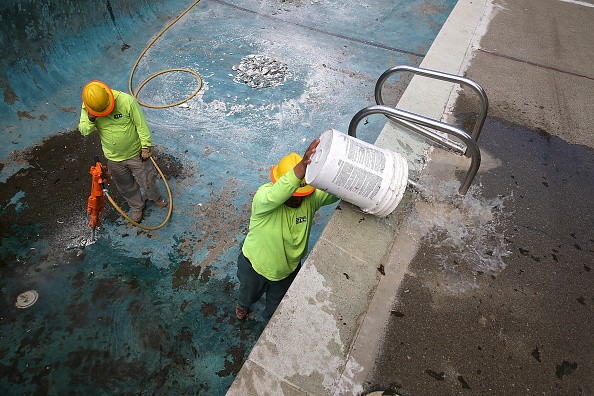Summer season is not just about vacation in a cool off place. But it's also about the number of bacteria and virus who find a suitable temperature to flourish. Ice cream dispensers, air conditioners and swimming pools, especially, are at an increased risk of invasion by microorganisms in such a season.
The United States Centers for Disease Control and Prevention (CDC) has advised people to inspect a pool carefully before diving into it straight away to get some respite from the heat. The agency has strongly urged people to check when was the pool inspected or cleaned the last time.
The CDC based its recommendation on a routine inspection of the public aquatic facilities conducted in 2013. The report contains the health inspection data for 16 public health facilities located across five states in the U.S. -- Arizona, Florida, New York, Texas and California.
Published in the CDC's Morbidity and Mortality Weekly Report, the CDC report revealed that each year, a number of hot tubs, public pools and similar places are closed because they violate the health and safety standards set by the agency. Violations pertaining to the health and safety standards are measured against the 15 Model Aquatic Health Code (MAHC), a set of guidelines announced by the CDC in August 2015.
During the inspection of more than 48,000 places, the CDC team found that more than 80 percent of the health facilities inspected had violated at least one of the 15 MHAC. The places included lazy rivers, spas, lounge and pools that otherwise possess chemically treated water.
The most common guidelines violated by such facilities, primarily kiddie pools and wading pools, include the absence of safety equipments, improper pH levels and unsuitable disinfectant concentration.
Officials at public aquatic facilities add chemicals such as chlorine to stop harmful bacteria from growing in swimming pools and spas. However, when such disinfectants combine with human inputs that people tend to release when they dive into water, disonfection byproducts are formed.
A study published in Environment Science & Technology and conducted by a team of U.S. researchers found that there are more than 100 of these byproducts present in such aquatic facilities. An exposure to such byproducts may lead to a number of illnesses, including cancer of the bladder and asthma.
The following video explores swimming pool and beach health hazards:



























